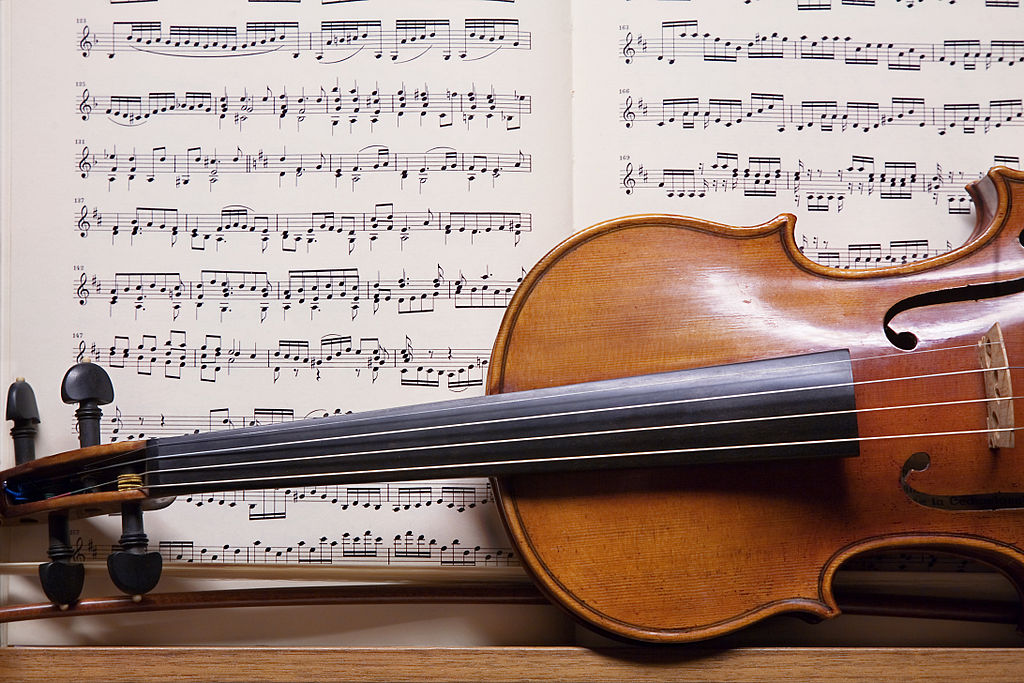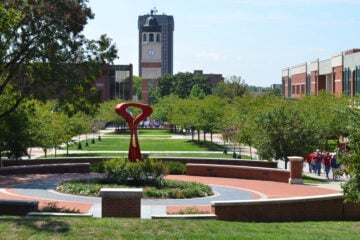Despite station sales, classical music remains strong as format

Jorge Royan / Wikimedia Commons
Recent sales of classical stations in Miami and Houston are setbacks in public radio’s efforts to expand signals and strengthen public service, but they aren’t a harbinger for the decline of the format in general.
In a blog post about the pending sale of Houston Public Media’s KUHA, public radio veteran Ken Mills asked if it signaled a “tipping point” for the format. “Classical music on terrestrial radio has been in decline for many years,” he wrote.
This has certainly happened in commercial radio but has fed a common misperception about classical music in the public media system.
I have heard similar remarks many times from public radio colleagues. Those of us who have been managing classical stations haven’t been in a position to refute it — until now.
Recent research undertaken by the Station Resource Group and a group of classical stations has found that the audience for classical music on public radio is growing. Listenership has increased on a national basis over the past three years.
Acquisitions of the Classical South Florida stations and Houston Public Media’s KUHA were part of a strategic expansion of public radio classical signals since 2011, but their financial struggles don’t reflect what’s happened elsewhere. Many other stations are on sound footing.
As part of a larger effort to develop strategies for the future, SRG’s Tom Thomas and Terry Clifford set out to develop a baseline for understanding how classical stations are performing nationwide. They followed audience trends for 31 stations from spring 2012 through spring 2015 and found positive indicators of the health and viability of the classical format.
The average share of listening to the 31 classical stations has grown to 1.6 percent since spring 2012, according to SRG’s analysis of data from the Radio Research Consortium.
 Since audience share can increase even if the number of listeners decreases, SRG also looked at average–quarter-hour audience. The trend is the same: AQH has grown 12 percent from 2012 to 2015.
Since audience share can increase even if the number of listeners decreases, SRG also looked at average–quarter-hour audience. The trend is the same: AQH has grown 12 percent from 2012 to 2015.
 If classical public radio is doing so well across the system, what happened to the stations in Miami and Houston, two of the largest media markets in the country? In both cases, the explanation boils down to economics and business modeling of station acquisitions.
If classical public radio is doing so well across the system, what happened to the stations in Miami and Houston, two of the largest media markets in the country? In both cases, the explanation boils down to economics and business modeling of station acquisitions.
American Public Media Group and Houston Public Media acquired these stations when prices were very high. They took on large debt loads before the recession; after the downturn, their listeners were less able to contribute to support the service expansion. Furthermore, both Classical South Florida (from the outset) and Houston Public Media (for the past year or more) anchored their broadcast days with the syndicated service Classical 24, making scant use of local hosts and local programming. All of this impacted fundraising and financial viability.
In other cities, recently acquired classical stations are thriving. This group includes KVOD, Denver; WQXR, New York; KDFC, San Francisco; WCRB, Boston; and WFCL, Nashville. In addition, KING in Seattle has successfully converted from a commercial to noncommercial revenue model. WETA in Washington, D.C., has also performed extraordinarily well since it switched to an all-classical format.
With these signal expansions, we’ve demonstrated that the noncommercial model works much better for classical music than the commercial model because listener support provides a larger and more stable source of funding than advertising.
It is important that we learn lessons from the station sales in Miami and Houston, but it is most important that we learn the right lessons. APM is still operating a very successful classical service in Minnesota and is committed to classical music and arts and culture programming across the organization. They produce national programs that stations integrate very successfully with local programming to enhance service to their communities.
I’m very encouraged — as are other participants in SRG’s study — that listening to the broadcast services of public radio’s classical music stations has been growing at such a steady pace. That listenership trend compares quite favorably to those for other public radio formats and for broadcast radio in general.
The lesson to be drawn from Miami and Houston is not about the viability of the public radio classical format. It is a warning that we need to be careful about acquisitions, debt loads and our business models. It is also a reminder that we must continue to nurture connections with our audiences by broadcasting the best programs from our national portfolio and maintaining a strong commitment to local service.
Along with other classical leaders who are guiding the SRG effort — including Graham Parker at WQXR, Jennifer Ridewood at KING and Judy McAlpine at APM — I believe that public radio’s classical stations have significant opportunities for continued growth and deepened connections and value to the individuals and communities they serve.
Brenda Barnes is president of Classical California, a station group that includes KUSC in Los Angeles and KDFC in San Francisco. She previously managed public radio stations in Iowa, Virginia and Ohio, and has focused on classical stations since 1995. Barnes currently serves as vice chair of the SRG board and is a former board member for NPR, Greater Public and Eastern Public Radio.








